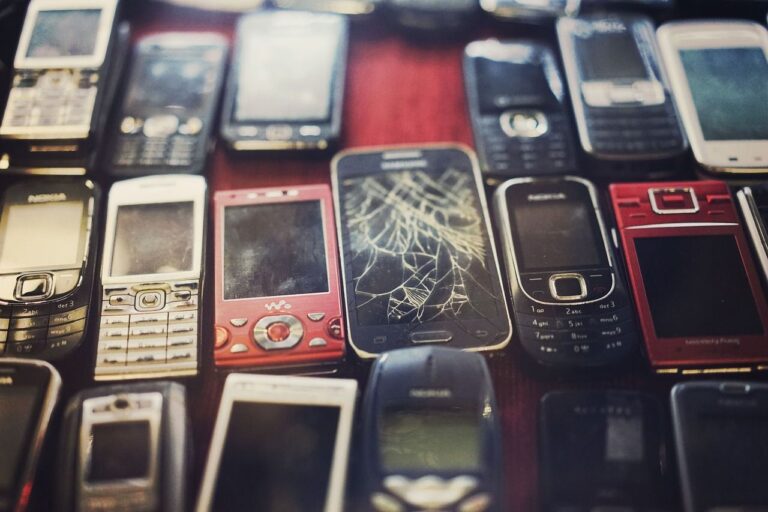Old computers, smartphones, USB sticks but also fridges and toaster…often this e-waste is not disposed of and recycled properly, and in many cases ends up in open dumps in developing countries, causing environmental and humanitarian disasters.
Fortunately, a team of US researchers has invented a new method of recycling e-waste. Furthermore, there are many things we can do to contribute and reduce the ecological impact of e-waste.
Here, we explore these topics in more detail and look at how we can make our electronic devices last longer to produce less waste.
Table of Contents
What is e-waste and how to recycle it
E-waste includes practically all the small and large household appliances, electronic and IT devices we use every day, from phone chargers to washing machines.
These objects are special and dangerous for the environment, as they contain many materials and pollutants. However, e-waste also contains precious metals. So a good circular economy not only protects the environment, but also allows us to recover part of the value of these appliances.
Here are some good habits to recycle e-waste:
- collect devices in a separate container;
- LED, energy-saving and neon bulbs are also e-waste, but should be stored separately;
- if possible, remove batteries, which should be disposed of separately, as they are very polluting;
- take the e-waste to the collection point of your municipality. If you are in doubt, ask the information service in your city.
The environmental and humanitarian problem of e-waste
Currently, many first-world nations ‘export’ (dump) their e-waste in developing countries, where environmental laws are less strict. One of the main destinations for the millions of tonnes of European and American e-waste is Africa, particularly Ghana, with dozens of open dumps of e-waste.
Since 1992, there have been international regulations prohibiting the movement of hazardous waste across borders. But one exception to the rule is that devices can be exported and then repaired locally and resold as second-hand items.
Thanks to this simple legal loophole, Europe, the USA and various other countries around the world have brilliantly ‘solved’ the e-waste recycling problem. Namely, by dumping it in countries where economic necessity and corruption make the unacceptable acceptable.
In fact, part of the local population engages in ‘recycling’ the waste in an attempt to extract precious metals or recover useful parts. To do so, they burn or dissolve circuits, boards and cables in acid, releasing a huge amount of substances that are extremely dangerous to environmental and human health.
What are the solutions to the e-waste problem
Fortunately, there is much we can do to improve the situation. Mainly, there are two general solutions: recycle more and throw away less. At present, only 20% of electrical and electronic waste is recycled, and this percentage must definitely increase in the future.
But recycling is not a medicine for all ecological ills, the real solution is to produce less waste. Here are 5 practical tips to make your devices last longer:
- charge the battery well to make it last longer;
- reduce the frequency with which you change your laptop or phone. Think about where the devices you no longer use end up and consider making them last another six months or another year;
- if the performance of the device has reduced, before throwing it away try freeing up memory, formatting it and adjusting the settings;
- sometimes, the performance of a device decreases due to a virus. Install a cybersecurity suite and run a full scan to remove viruses and malware from computers and phones.
As we have seen, it takes very little to reduce the amount of e-waste we produce. Moreover, by separating and recycling them in the right way, we will further contribute to improving the process.
The planet and developing countries need an effort of awareness and responsibility from the citizens of advantaged nations to mitigate the harmful consequences of technological consumerism.
Read also: The cost of fast fashion industry: the human, social and economic impact












